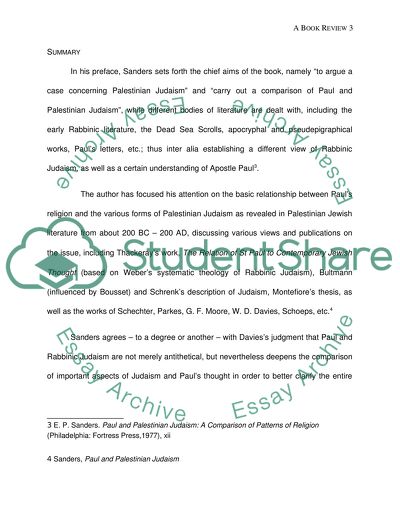Cite this document
(“Paul and Palestinian Judaism by E.P. Sanders Book Report/Review”, n.d.)
Retrieved de https://studentshare.org/religion-and-theology/1485837-paul-and-palestinian-judaism-by-ep-sanders
Retrieved de https://studentshare.org/religion-and-theology/1485837-paul-and-palestinian-judaism-by-ep-sanders
(Paul and Palestinian Judaism by E.P. Sanders Book Report/Review)
https://studentshare.org/religion-and-theology/1485837-paul-and-palestinian-judaism-by-ep-sanders.
https://studentshare.org/religion-and-theology/1485837-paul-and-palestinian-judaism-by-ep-sanders.
“Paul and Palestinian Judaism by E.P. Sanders Book Report/Review”, n.d. https://studentshare.org/religion-and-theology/1485837-paul-and-palestinian-judaism-by-ep-sanders.


